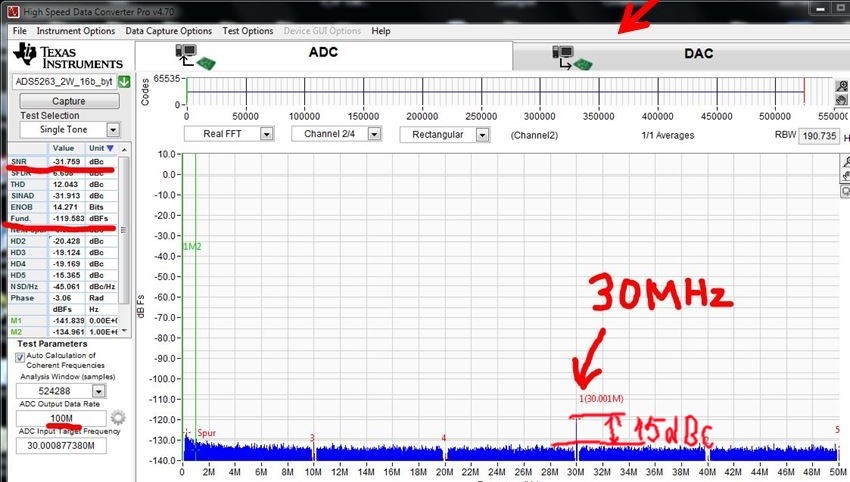Tool/software: Linux
I working with ads5263. In dokumentation i see SNR = 84.1 dBFS for 15 MHz input signal with 100 MSPS clock signal. Teoretically, in BW (bandwidth) = 6 Hz i must have noise floor -137 dBFS. FS = 16 dBm. I analyze the noise floor in the BW = 6 Hz in the absence of an input signal. In may case i have -125 dBF in BW = 6 Hz.
Theoretical calculation: Noise Floor = FS - SNR - 10*Lg(fs:(2*BW)).
where:
FS - full scale signal (for ads5263 FS = 16 dBm);
SNR - signal to noise ratio (for ads5263 SNR = 84.1 dBFS);
BW - the band in which we work (6 Hz);
fs - sampling frequency.
So! The result of theoretical calculation is -137 dBFS.
Real result (result obtained in practice) is -125 dBFS.
Why the result obtained in practice does not coincide with the theory?
Perhaps I misunderstand the documentation or my calculation is incorrect.
Help my please understand these problem.


